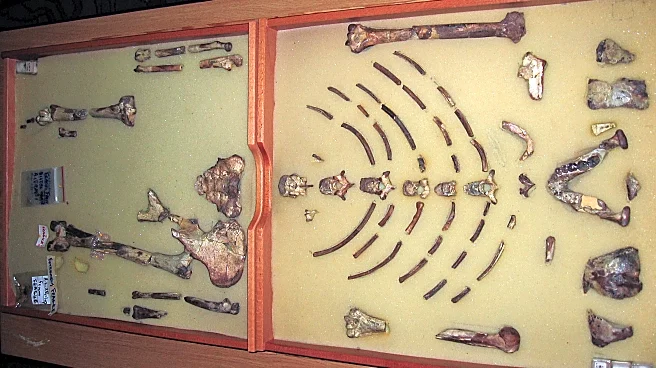What's Happening?
A remarkably well-preserved Roman bathhouse has been discovered submerged about 10 miles off the coast of Naples, Italy. This site, located among the ruins of Baiae, is believed to have belonged to Marcus Tullius Cicero, one of Rome's most renowned orators and statesmen. The bathhouse features advanced technology for its time, including a complex heating system known as the suspensura system, which circulated hot air through pillars beneath the floor and hollow tiles in the walls. Baiae was a luxurious resort frequented by elite Romans, including Julius Caesar and Augustus. The site, now a popular tourist destination for divers, was rediscovered in the 20th century, with significant finds such as intact marble sculptures and mosaic floors.
Why It's Important?
The discovery of the bathhouse provides potential physical evidence of Cicero's villa, offering insights into Roman architecture and luxury. It highlights the technological advancements of ancient Rome, particularly in heating systems. The site also underscores the historical significance of Baiae as a center of Roman elite culture and leisure. This discovery could enhance understanding of Roman social practices and architectural innovations, contributing to archaeological and historical studies.
What's Next?
Further exploration and excavation of the site may reveal more about its construction date, intended use, and reasons for abandonment. Researchers might continue to investigate the broader area to uncover additional artifacts and structures. The site could attract more tourists and scholars, boosting local tourism and academic interest.
Beyond the Headlines
The ethical considerations of preserving underwater archaeological sites are significant, as they involve balancing tourism with conservation. The discovery also raises questions about the impact of volcanic activity on historical sites, as Baiae was submerged due to such events.












